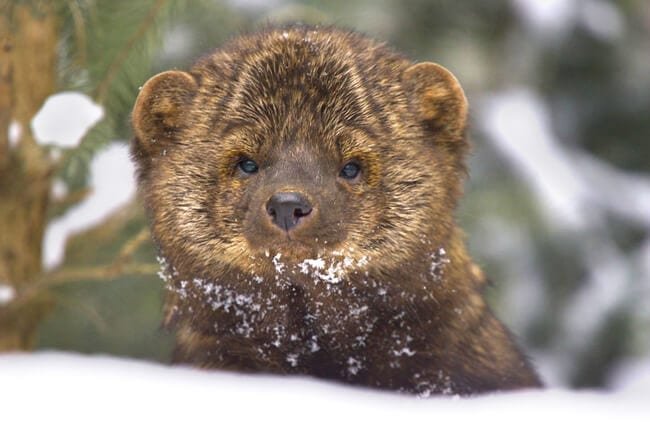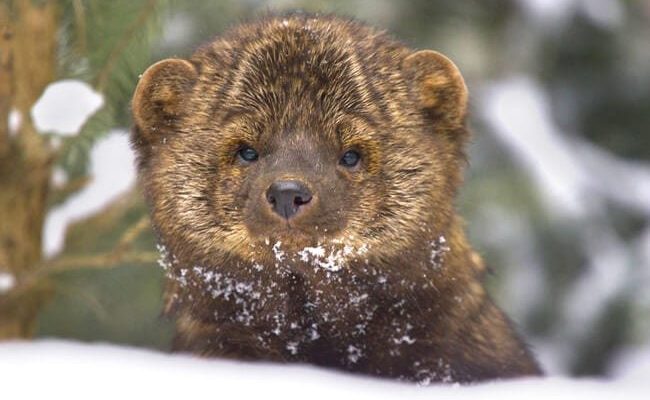
The fisher, scientifically known as *Pekania pennanti*, is not just another cute face in the forest. Instead, it’s a fascinating part of our ecosystem. Found mainly in the northern forests of the U.S. and Canada, these creatures have unique traits and behaviors that might surprise you. Here are ten captivating facts about the fisher that’ll change the way you view this remarkable animal—think of them as little gems of nature that spark curiosity.
1. The Fisher is Not a Catfish!
It’s easy to get confused with names sometimes. “Fisher” might lead you to think of a fish, but let me explain: this animal is actually a mammal. Fisher are more closely related to weasels and otters than they are to any aquatic life. They have sleek, furry bodies that make them look a bit like a cross between a small bear and a long cat. Seriously, if you saw one, you’d probably think, “What on earth is that?”
These animals measure about 30 to 47 inches long, including their bushy tails, which can be up to 15 inches. They’re built for agility, which aids them in their natural habitat, which is often dense forests. So while the name might suggest a different kind of creature, these mammals are fascinating in their own right.
2. Masters of Climbing
Fisher are exceptional climbers. In fact, they’ll often scale trees to hunt for food, escape predators, or even just to frolic about. Their long, sharp claws allow them to grip onto tree trunks like skilled acrobats. Have you ever watched a squirrel zip up a tree? Imagine that, but a little bigger and a lot more agile.
They can scale vertical trunks and leap gracefully between branches, making them daring forest inhabitants. This climbing skill comes in handy when they’re hunting for birds or small mammals, which they often find in the treetops. Plus, their climbing ability sets them apart from many other North American carnivores.
3. A Dietary Delight
So, what do these little furballs eat? The fisher has a diverse diet. Mostly, they feast on small mammals, including squirrels, rabbits, and even porcupines. Yes, you read that right—porcupines! It takes a special blend of skill and bravery to tackle such spiny prey, but the fisher has adapted to be a formidable predator.
Here’s the interesting part: when hunting porcupines, fishers tend to focus on the softer underbelly, making a meal out of what many animals would consider too dangerous. They’re not picky eaters, though; they’ll also munch on fruits, nuts, and even insects when the opportunity arises.
4. Solitary Creatures
You might be surprised to learn that fishers are generally solitary animals. Unlike some species that thrive in packs, fishers prefer to wander alone. This behavior helps them establish and defend their territory more efficiently. They communicate with one another through vocalizations, scents, and tracks they leave in the snow.
When you think about it, this solitary nature gives them a bit of an air of mystery. It’s rare to see two fishers together, and they tend to meet only during mating season. It’s a bit like a secret club that only opens its doors once a year!
5. Adaptations for Survival
The fisher is well-adapted to thrive in a variety of habitats, from dense forests to mountainous regions. Expect to find them in areas with plenty of trees since they rely heavily on these for climbing and hunting. Their thick fur helps them stay warm during winter, while their sharp claws and teeth make them excellent hunters.
They also have a keen sense of smell and hearing, which assists in locating prey. Imagine having a natural GPS and radar system built right into your body—that’s what fishers have! This adaptation allows them to be stealthy and efficient hunters.
6. Mating and Offspring
Fishers typically mate in the late winter or early spring, and after a gestation period of roughly 10 months, female fishers give birth to a litter of two to four kits. These little ones are born blind and rely completely on their mother for nourishment and protection.
Once they’re weaned, the kits stick around with their mother for several months to learn essential survival skills. You might picture a cozy, woodsy setting where the mother teaches her playful kits how to climb and hunt. The little fishers are quite adorable, with their fluffy fur and curious nature.
7. An Ecological Role
Fishers play a vital role in their ecosystem. As predators, they help control the populations of small mammals, which, if left unchecked, could lead to an imbalance in the environment. Think of them as nature’s own pest controllers, ensuring that the populations of certain animals remain stable.
Additionally, their presence indicates a healthy forest ecosystem. Protected areas that house fishers often boast diverse plant and animal life, making them indicators of ecological well-being. Essentially, if fishers are thriving, it’s a good sign that their habitat is in good shape.
8. Conservation Status
Despite their adaptability, fishers face threats, primarily due to habitat loss and hunting. Over the years, their populations have fluctuated, with extirpation in some areas. Conservation efforts are crucial to secure their future, as various organizations work to protect their habitats and educate the public on the importance of these unique creatures.
Every time you hear about wildlife conservation, it’s worth remembering that even the smallest creatures matter. Fishers are a piece of the puzzle in our environment, and protecting them contributes to the larger picture of biodiversity.
9. Fishers vs. Pine Martens
You might be wondering how fishers compare to pine martens, another member of the weasel family. While both animals have similar features and habitats, there are subtle differences. For instance, fishers are generally larger and have darker fur than pine martens.
Pine martens are more adept at climbing and are less likely to tackle larger prey, like porcupines. In a way, you can think of fishers as the more rugged, adventurous cousins of pine martens. They each have unique traits that help them thrive in their respective environments.
10. Cultural Significance
Lastly, fishers hold cultural significance in Native American folklore and traditions. Different tribes have stories about fishers that highlight their cleverness and adaptability, often using them as symbols of resilience.
If you look closer, you can find these stories woven into the fabric of local history. It’s another layer that adds depth to this fascinating creature, showing just how interconnected nature and culture can be.
In conclusion, the fisher is a remarkable creature that embodies the beauty and complexity of the natural world. It’s easy to overlook animals like this when we think of wildlife, but learning about them enriches our understanding of ecosystems. Next time you wander through a forest, remember the fishers—those agile little mammals silently maintaining balance in the wild.

